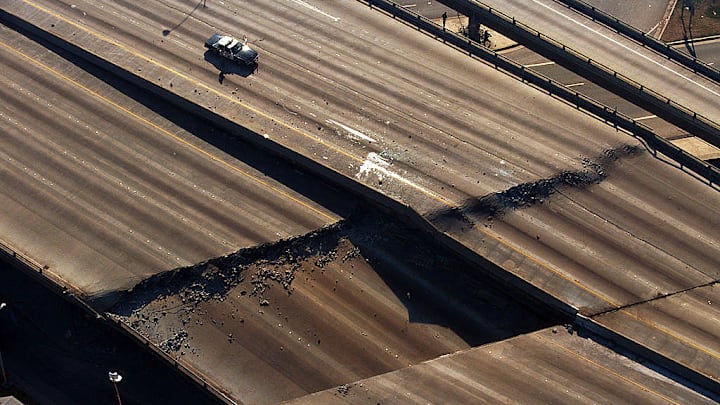“The Big One,” the theoretical earthquake that will topple their sunbaked paradise, looms large in the minds of Southern Californians. Many imagine it will be unleashed from the San Andreas fault, where two of Earth’s tectonic plates grind against each other 30 miles east of downtown Los Angeles. A 2008 study of the Big One’s potential impact predicted at least 1800 deaths, 50,000 injuries, and $200 billion in structural damage and losses.
Now, a new study published in the journal Geosphere suggests the hypothetical situation could be even worse, thanks to seismic shaking farther up the coast.
A Burning Ring of Fire
The West Coast forms part of the Ring of Fire, an incredibly active seismic zone where tectonic plates push against each other along the coasts of Asia and the Americas. Lurking beneath coastal waters stretching from Northern California to Vancouver Island, the Cascadia subduction zone is a 620-mile area where the Juan de Fuca tectonic plate and two smaller plates are sliding beneath the larger North American plate. From the southern point of the Cascadia subduction zone, the San Andreas fault extends parallel along the coast to Baja California.

The Cascadia configuration, in which strain builds between the plates until it’s suddenly unleashed, has the potential to create high-magnitude “megathrust” earthquakes. The last time it caused a significant quake was 1700, when it produces a tsunami that struck North America and Japan. It might have reached 9 (out of a possible 10) on the magnitude scale, and Indigenous groups describe the event in their oral traditions.
These systems have existed alongside each other for millions of years, and geologists predict that each will spur a major disaster once every few centuries. Geologists expect such a “megathrust” earthquake from the Cascadia subduction zone once every 400 to 600 years, and every 200 to 300 years for the most consequential area of the San Andreas fault.
You May Also Like:
- 9 Rockin’ Facts About Earthquakes
- Tsunami vs. Tidal Wave: What’s the Difference?
- Why Can’t We Predict Earthquakes?
Add Mental Floss as a preferred news source!
Clues in the Cores
In the new study, researchers from Oregon State University and other institutions drilled through the ocean floor to obtain sedimentary cores, which offer a record of undersea activity going back thousands of years. Originally, they meant to collect cores only from the Cascadian zone, but a navigational mistake took them south to the waters above Noyo Canyon, in the San Andreas zone. They decided to drill a core from Noyo Canyon as well.
Seismic activity, such as a landslide resulting from a quake, leaves a distinct sedimentary signature within a core. These signatures, called turbidites, feature a layer of larger grains covered by a layer of finer grains. In the Noyo Canyon core, the turbidites appeared in pairs—one one top of the other—which indicated two seismic events occurring almost simultaneously. The same pattern appeared in cores drilled in the Cascadia zone, and radiocarbon dating showed the turbidites were deposited at the same time.

“A lightbulb went on and we realized that the Noyo channel was probably recording Cascadia earthquakes, and that at a similar distance, Cascadia sites were probably recording San Andreas earthquakes,” Chris Goldfinger, a paleoseismologist at Oregon State University and the study’s lead author, said in a statement.
In additionally, they showed the movement occurred simultaneously in both zones in 1906, 1980, and 1992. They “may represent direct evidence of partial synchronization of these two great faults,” the authors write.
The Really Big Ones
The cores suggest that seismic activity to the north on the Pacific coast could trigger a shift in the San Andreas fault, unleashing a series of earthquakes and resulting tsunamis that could cause unprecedented devastation all along the West Coast.
This, of course, could be very bad. The researchers theorized that a chain reaction of seismic activity could decimate vast swaths of the densely populated coastal communities. “If I were in my hometown of Palo Alto, [California], and Cascadia went off, I think I would drive east. There looks to me like a very high risk the San Andreas would go off next,” Goldfinger said.
“It’s kind of hard to exaggerate what a [9-magnitude] earthquake would be like in the Pacific Northwest,” he added. “And so the possibility that a San Andreas earthquake would follow, it’s movie territory.”
